

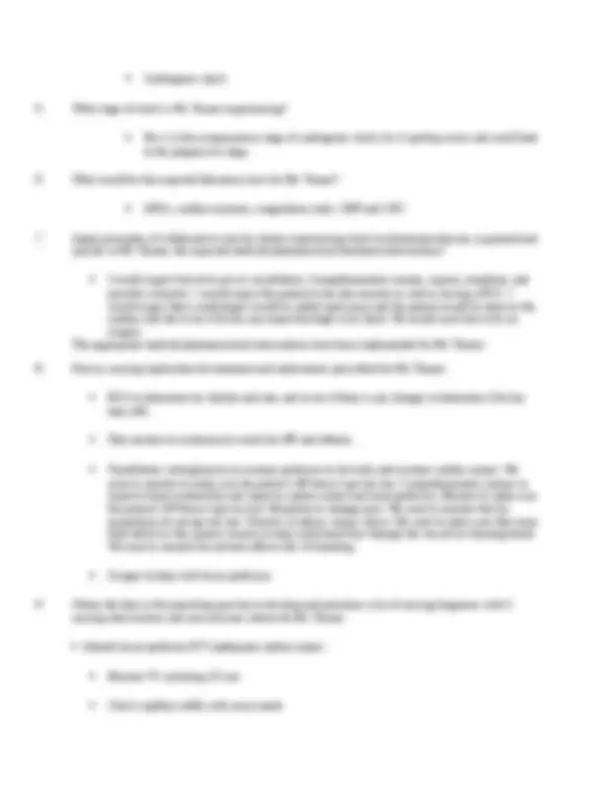
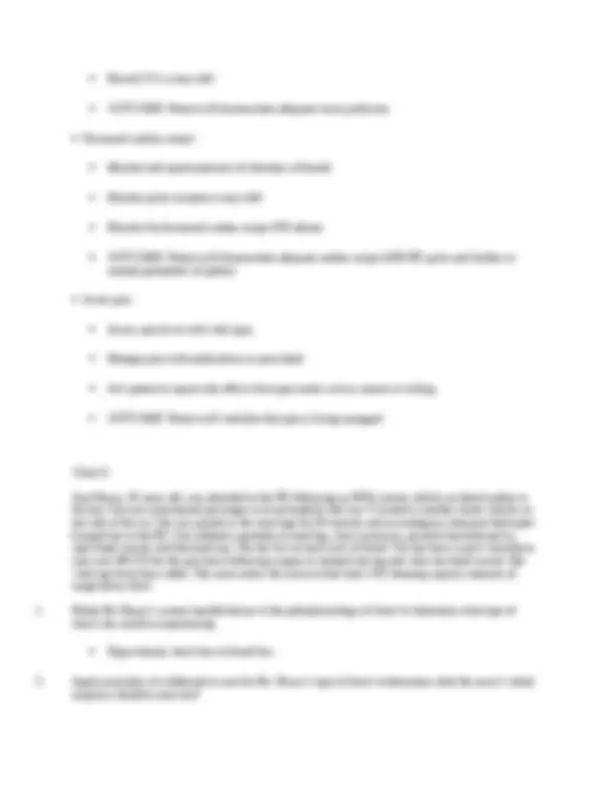
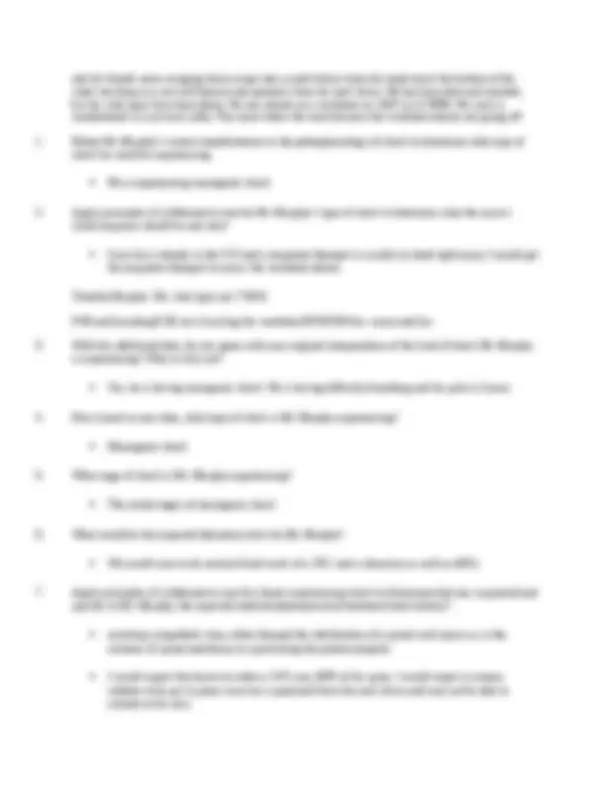
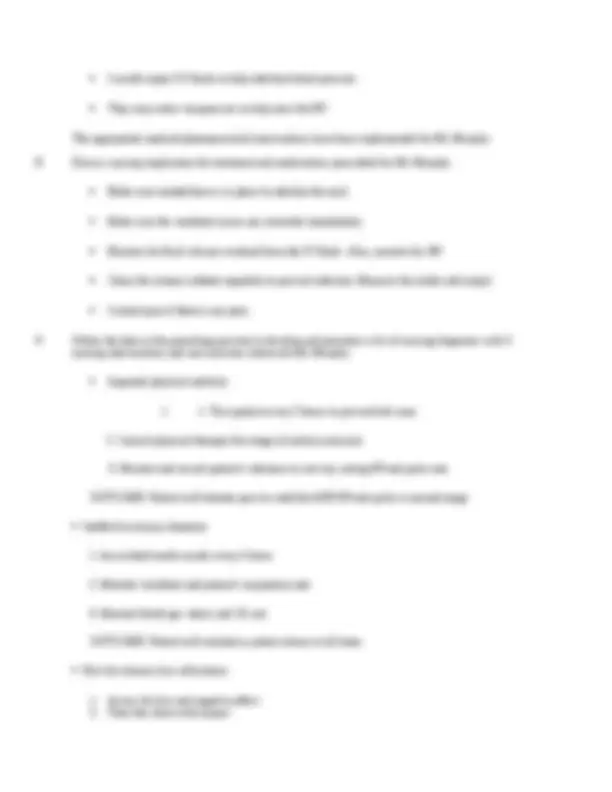
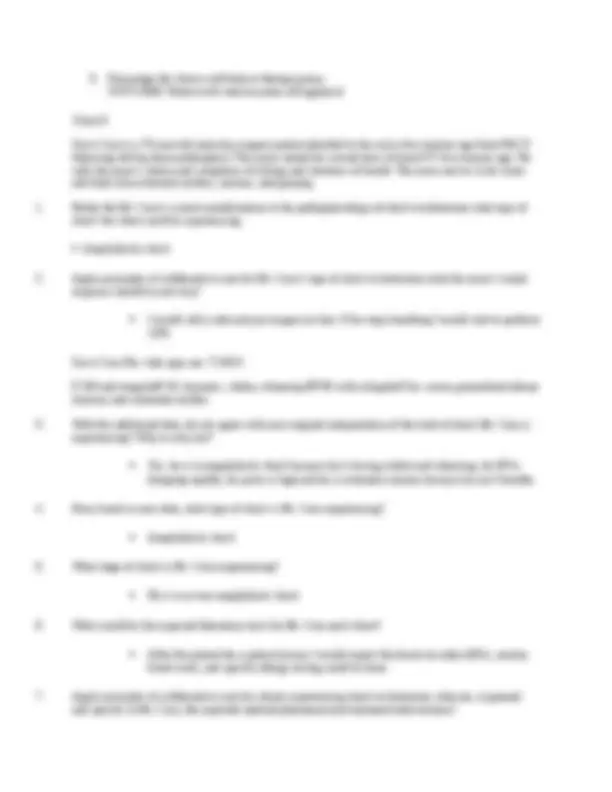


Study with the several resources on Docsity

Earn points by helping other students or get them with a premium plan


Prepare for your exams
Study with the several resources on Docsity

Earn points to download
Earn points by helping other students or get them with a premium plan
Community
Ask the community for help and clear up your study doubts
Discover the best universities in your country according to Docsity users
Free resources
Download our free guides on studying techniques, anxiety management strategies, and thesis advice from Docsity tutors
The pathophysiology and collaborative care principles for patients experiencing different types of shock, including septic, cardiogenic, hypovolemic, neurogenic, and anaphylactic shock. It provides detailed analysis of the clinical manifestations, laboratory tests, and expected medical/pharmaceutical interventions for each type of shock, as well as nursing implications and nursing diagnoses with interventions and outcome criteria. A comprehensive resource for healthcare professionals to understand the management of shock patients and develop appropriate nursing care plans.
Typology: Exams
1 / 12

This page cannot be seen from the preview
Don't miss anything!







Case Study Shock Multiple Cases Huang Mei Lan is a 43 year old unmarried female who lives alone in a major West Coast city. Three years ago she was diagnosed with breast cancer and underwent a mastectomy of the affected breast and follow up chemotherapy. Last month, Ms. Lan experienced a recurrence of cancer in the lymph glands of the affected side. Surgery to remove the glands was performed and chemotherapy started. Ms. Lan has a central line, a urinary catheter, and a surgical incision. The nurse enters Ms. Lan’s room and find her huddled in the middle of the bed shivering violently.
She is experiencing sepsis.
Cardiogenic shock
Record I/O’s every shift OUTCOME: Patient will demonstrate adequate tissue perfusion Decreased cardiac output Monitor and report presence of shortness of breath Monitor pulse oximetry every shift Monitor for decreased cardiac output E/B edema OUTCOME: Patient will demonstrate adequate cardiac output AEB BP, pulse and rhythm in normal parameters of patient Acute pain Assess pain level with vital signs Manage pain with medications as prescribed Ask patient to report side effects from pain meds such as nausea or itching OUTCOME: Patient will verbalize that pain is being managed Client 3 Jane House, 20 years old, was admitted to the ED following an MVA (motor vehicle accident) earlier in the day. She was unrestrained passenger in an automobile that was T- boned by another motor vehicle on her side of the car. She was pinned in the wreckage for 30 minutes and an emergency transport helicopter brought her to the ED. She suffered a partially severed leg, chest contusion, possible fractured pelvis, open head wound, and fractured jaw. She has lost several units of blood. She has been in post- anesthesia care unit (PACU) for the past hour following surgery to reattach her leg and close her head wound. Her vital sign have been stable. The nurse enters the room to find Jane’s NG draining copious amounts of sanguineous fluid.
We would use vasoconstrictors to help increase the BP. We want to monitor for signs of excessive vasoconstrictors. We want the inotropic drugs to improve heart muscle contraction and we want to monitor for CP and excessive tachycardia.
and his friends were swinging from a rope into a creek below when his head struck the bottom of the creek resulting in a cervical fracture and paralysis from his neck down. He has been alert and oriented, but his vital signs have been labile. He was placed on a ventilator on CMV at 12 BPM. His neck is immobilized in a cervical collar. The nurse enters the room because the ventilator alarms are going off.
Fluid management is critical, as massive fluid shifts can occur within minutes due to increased vascular permeability. Intramuscular epinephrine is given for its vasoconstrictive action. Diphenhydramine (Benadryl) is given intravenously to reverse the effects of histamine, thereby reducing capillary permeability. Nebulized medications, such as albuterol (Proventil), may be given to reverse histamine-induced bronchospasm. The appropriate medical/pharmaceutical interventions have been implemented for Mr. Cron.